Centennial Bowl could see completion by 2017
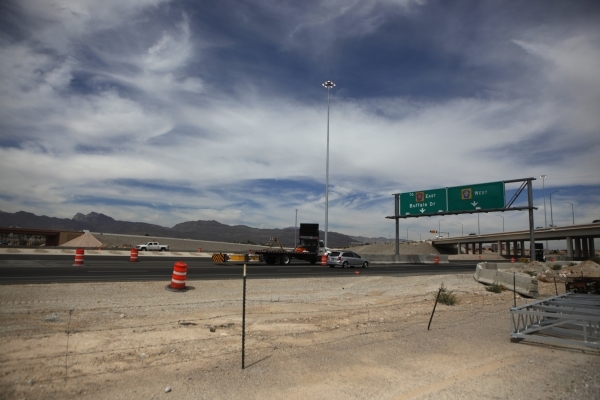
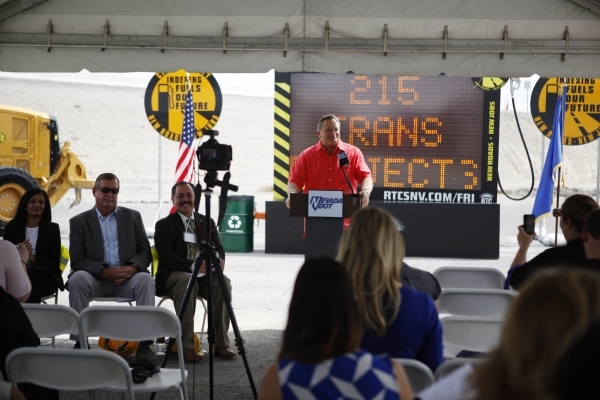
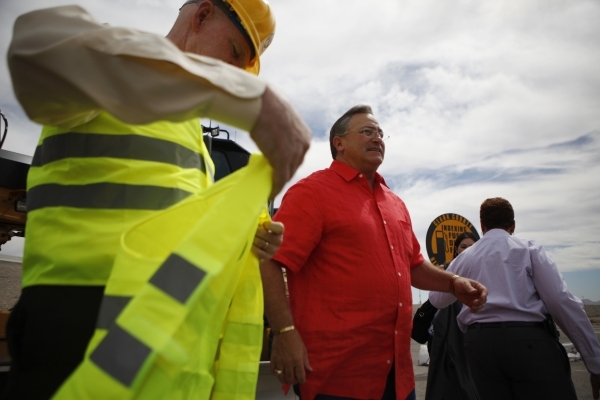
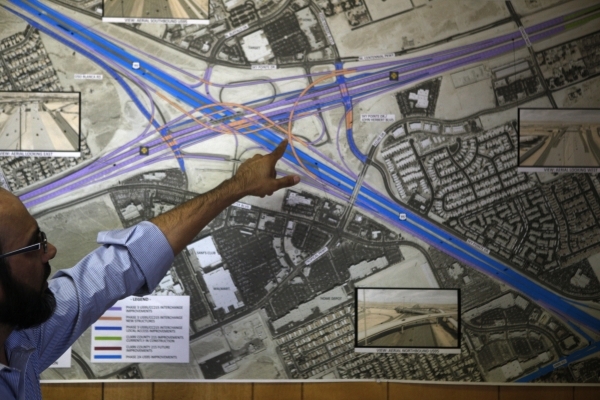
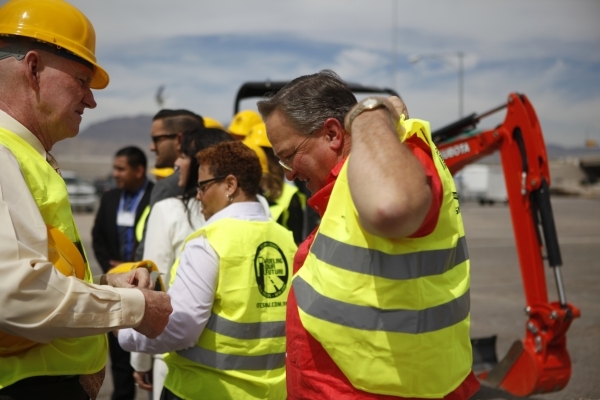
In a continual effort to alleviate traffic in the thriving area of the northwest valley, Phase 3A of the U.S. 95 Northwest Corridor Improvements Project celebrated its groundbreaking Aug. 6.
The $47 million interchange between U.S. Highway 95 and the 215 Beltway — dubbed the “Centennial Bowl” — is set to improve traffic, mobility and motorist safety in an area where more than 107,500 vehicles travel daily, according to Rudy Malfabon, director of the Nevada Department of Transportation.
“This is a big step towards making improvements to our area,” said Rep. Cresent Hardy, R-Nev., vice-chairman of the House Committee on Transportation and Infrastructure’s Highways and Transit subcommittee. “This corridor right here is a very important corridor for us. It’s the I-11 corridor. It provides a lot of opportunities for future economic development and future growth for the state of Nevada.”
By 2036, traffic is expected to increase to 160,000 vehicles a day based on residential development and population predictions. That would make the Centennial Bowl interchange the third-busiest in the state.
The event drew a crowd of enthusiastic elected officials who spoke about federal, state, county and city collaboration efforts that have made the project possible.
“Collaboration is the key today,” said Clark County Commissioner Larry Brown, who chairs the Regional Transportation Commission of Southern Nevada. “If we continue this unified effort to invest in our infrastructure … it (becomes) a huge economic indicator. It keeps Las Vegas vibrant. It keeps those companies coming to town and our local employees working to put food on the table.”
Mayor Pro Tem and Ward 6 City Councilman Steve Ross volunteered to turn the first shovel of dirt.
“I’m a big advocate for jobs and economic growth and vitality,” Ross said. “I’m wearing this orange shirt to symbolize the ever-sacred orange cone. Behind every orange cone is a job. As my office gets bombarded with complaints, I try to remind everybody that it’s going to get much worse before it gets better.”
The project is set to build north and southbound U.S. 95 connection ramps to the eastbound and westbound Beltway.
It will also add a southbound collector-distributor road, which serves to move traffic from local streets to a high-capacity urban road.
Other planned enhancements include a 60-foot-tall, 2,500-foot-long bridge that will cross over two major freeways, linking westbound 215 to southbound U.S. 95. Additional upgrades consist of placing 8,200 feet of storm drainage while adding new signs, lighting and landscaping. The project is also estimated to create more than 600 construction jobs.
Construction is being financed through a combination of funds, including $19.5 million from the Federal Highway Administration, $6.4 million from the state of Nevada, $6.4 million from the Fuel Revenue Indexing and $14.4 million from Clark County Regional Flood Control District.
Motorists can expect traffic shifts including lane reductions and narrowed lanes in the fall. In the winter, continued lane, ramp and shoulder closures are planned to widen southbound U.S. 95 and to construct the U.S. 95 ramps and walls.
Bridge construction is slated to begin in summer 2016, and commuters can expect paving activities to begin then, with ramp closures and reduced lanes on the 215. Ross said he is “optimistic” the project could be completed by spring 2017 if voters choose to extend the Fuel Revenue Indexing program next year, extending that program for 10 more years.
The program takes a portion of what motorists pay at the pump to support transportation projects. For the average motorist, the cost is about a dime a day to generate up to $700 million to fund 215 projects and create 9,000 jobs, according to rtcsnv.com.
Without the program’s extension, Ross said the five-phase Centennial Bowl project could take up to 16 years to complete.
“NDOT is undertaking a multi-year, multi-phase upgrade of U.S. 95 through northwest Las Vegas that began in 2010, extending from Washington Avenue to Kyle Canyon Road,” said Transportation Department spokesman Tony Illia. “Future phases include completion of the Centennial Bowl, additional highway widening and the creation of a full interchange at Kyle Canyon Road. Currently, the last phase of construction is scheduled to finish in 2029, based upon current financial planning. However, that could change depending upon future funding availability.”
“Construction can be frustrating at times,” Hardy said. “I’ve been in construction my whole life, but be patient with the project. What’s going on here is going to improve the quality of life.”
For current road information, visit nvroads.com.
— To reach North View reporter Sandy Lopez, email slopez@viewnews.com or call 702-383-4686. Find her on Twitter: @JournalismSandy.












